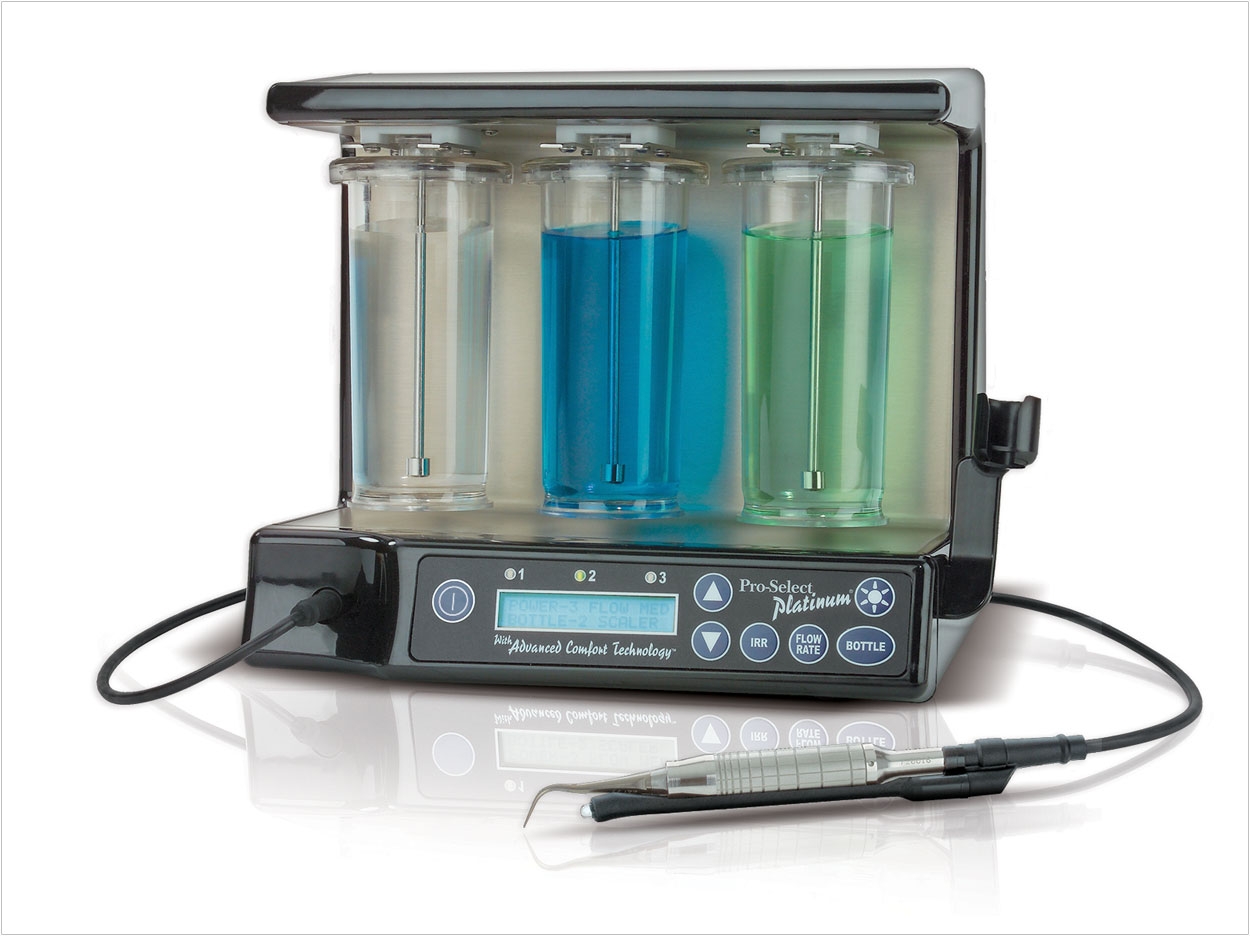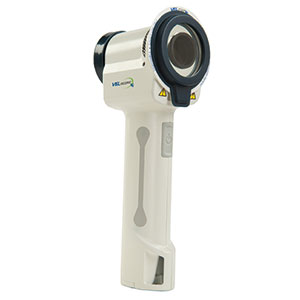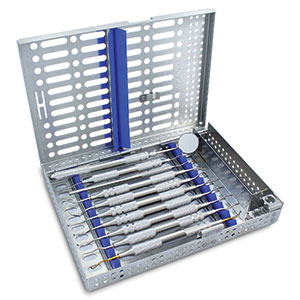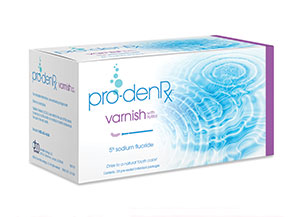
The dental hygiene profession has recently celebrated 100 years in existence. Reflecting on those 100 years, it is important that we take a moment to remember where we began and decide as a profession where we evolve from here. Thus far, we have developed from a “professional polisher,” receiving training from the dentist employer, to a full 2- or 4-year degree program from an accredited educational institute. Two things to consider are our roles and responsibilities within the office and the critical role we play with our patients.
Patients look to the dental hygienist for guidance, clinical care, education, advice, and advocacy. During the new patient exam, hygienists are meticulous with initial assessments and examinations; however, most have built a comfortable relationship that can sometimes interfere with proper assessments and health-based discussions with existing patients. In school, dental hygienists are taught that they play an integral role in assisting individuals and groups in achieving and maintaining optimal oral health. The hygienist plays an important part in providing educational, clinical, and consultative services to patients of all ages in a variety of settings and capacities.
PROFESSIONAL ROLES OF THE DENTAL HYGIENIST
Clinician: According to the American Dental Hygienists’ Association (ADHA), dental hygienists (in a clinical role) assess, diagnose, plan, implement, evaluate, and document treatment for prevention, intervention, and control of oral diseases, while practicing in collaboration with other health professionals.
Educator: The hygienist’s role is to educate patients on the disease processes, where the patient falls in that spectrum of disease, nutritional considerations, and daily habits that may possibly interfere with the patient’s health and oral hygiene.1
For the purpose of this discussion, we will discuss these 2 roles to illustrate that, by displaying excellence in these areas, we can not only provide the comprehensive care to the new millennium patient, but also gain better treatment acceptance rates (Table). These professional roles are similar in structure to that of the registered nurse in the medical model. Dr. Irene Woodall was quoted as saying, “Dental hygiene is a changing profession. The influence of compelling new research is changing the fundamental basis of our role in healthcare.”2
Collaboration Between the Dentist and Hygienist
In order to realize healthcare successes for patients, work must be done in collaboration with the dentist to ensure the pull-through of proper care. Dental hygienists must not only communicate the assessment findings to the doctor, but more importantly, to the patient. Although hygienists are not permitted to diagnose, they are properly educated and trained to recognize dental diseases.1 A co-discovery process with our patients during the assessment phase of the appointment can be done, rather than placing the entire responsibility on the dentist.
The dental hygienist can begin to demonstrate this shift by first evaluating the periodontal assessment that is performed on all patients including, and most importantly, the existing patient. The American Academy of Periodontics (AAP) reports that one in every 2 adults aged 30 and older are suffering from some form of periodontal disease, commonly referred to as gum disease.3 While we know this fact, we still overuse the D1110 procedure code (a prophy code).4
Code and Dental Terminology (CDT) description: Prophylaxis (D1110) is one of the most common procedures performed in hygiene and is also one of the most misinterpreted codes in all of dentistry.1 A prophylaxis is described as a preventive procedure, not a therapeutic one, according to the CDT procedures book. Knowing this, when we have patients presenting with bleeding 4s and 5s with even slight radiographic bone loss with a diagnosis of periodontal disease, a prophy would not be performed.1
 |
| Figure 1. VELscope (LED Dental [distributed by DenMat]). |
 |
| Figure 2. Pro-Select Platinum Piezo Ultrasonic Scaler with Heated Subgingival Irrigation (DenMat). |
 |
| Figure 3. Hartzell Root Planing and Scaling Kit (DenMat). |
Health Versus Disease
Ahead of discussing what occurs during a prophy, it is critical to know what the AAP defines as health versus disease. (To review the AAP parameters of care, visit perio.org.) It is vital to have an understanding of what the AAP considers early periodontal disease (radiographic loss of crestal bone with bleeding 4-mm pockets), and moderate and advanced periodontal disease. This knowledge is critical for the appropriate diagnosis and treatment planning of the prophy patient versus the periodontal therapy patient.1 A perio assessment on each patient should include the following:
- Medical History Review: Including prescribed medications, knowing what (if any) oral side effects that any medications may cause.5-7
- Radiographs (if indicated): Refer to the ADA guidelines of risk-based prescribing.
- Blood Pressure Screening: Monitoring from the dental chair can assist the medical professionals, alter the anesthesia that is given, and affect what will be seen when examining a patient’s mouth.7
- Open-Ended Questions: Uncover patient questions/concerns and determine what motivates the patient. Is the patient motivated by health, future expense, function, or aesthetics? To view the ADA’s prescribing protocol, visit ada.org.
- Extraoral (Head and Neck) Exam: Hygienists must explain the value of this procedure, and why it is necessary; this serves to build trust between the hygienist and the patient, and helps the patient understand the importance and worth of the dental hygiene appointment. Too often, hygienists don’t involve the patient in a discussion about the procedures being performed (such as oral cancer screenings, periodontal screenings, etc), thus diminishing the value of the appointment and making the patient feel quite removed from the process.
- Intraoral Exam: Hygienists should involve their patients by, once again, telling them what they are going to do. The average patient has no idea what the hygienist (or dentist) is doing during the tongue pull examination, for example. It is vital that transparency be shown when doing these procedures, which will reinforce the practice’s commitment to an incomparable standard of care. The use of adjunctive lesion detection systems such as the VELscope (LED Dental [distributed by DenMat]) tends to cement the dental hygienist’s role as a healthcare provider (Figure 1).
- Six Point Probing: All numbers and bleeding sites should be charted at least once annually. This document should be shared with the patient along with patient education on periodontal disease.8
Hygienists must inform the patient of what the periodontal screening is. Often patients feel their hygienist “poking” their gums, without an adequate explanation before the procedure. As a result, the patient has no idea that the measurements, and the recording of those measurements, are a part of an assessment to determine if periodontal disease is present. If one calls out each number, this helps the periodontal probing and charting become a co-discovery process. Explain to your patient that normal readings are typically between 1.0 and 3.0 mm, and that healthy gums do not bleed.9 Discuss your findings with the patient once the full periodontal charting is completed. Then, a consultation is done with the dentist to determine a diagnosis.10
The Restorative Exam
The hygienist is typically the first chairside contact during appointments that involve either a recall prophy or (new patient) nonemergency visits. As such, the hygienist has the ability to identify and educate the patient on periodontal issues and restorative issues that are present. Patients view the hygienist as an employee who does not have a vested interest in finding problems. Typically, during recall visits, the patient spends more time with the hygienist than with the doctor. Additionally, when the patient hears the same problems identified from both the hygienist and dentist, it helps reinforce what is present and what needs to be accomplished to fix the problem. This takes teamwork and communication between the dentist and hygienist.
Communication is key, placing faith in the skills of the hygienist to start the identification process and in educating the patient on what is noted. Many of the questions related to this phase of the process can be answered before the dentist enters the operatory to do his or her exam on the patient. Some of the routine areas (questions) that need to be addressed as the hygienist examines the mouth and during scaling include the following:
- Are the margins of amalgams and composites intact, or, is breakdown evident (visually or with an explorer)?
- With regard to any existing amalgam restorations, are any fractures/cracks noted?
- Looking at any existing composite resin restorations: is the material worn, or is there any shadowing noted under the filling material on the radiographs that may be indicative of recurrent decay from microleakage?
- Does the current filling occupy the majority of the coronal of the tooth? Can it be refilled, or will it be better managed with a more extensive restoration (some type of partial- or full-coverage restoration)?
- Are the margins on any existing partial-or full-coverage restorations open? Does an explorer catch in/under the margins? Do the margins appear open in the radiographs?
| Table. Professional Roles of the Dental Hygienist |
|
Customized Patient Education
When teeth are missing, the hygienist can initiate a discussion related to the usual need to have missing teeth replaced. Discussing fixed bridgework versus implants as alternatives, along with the pros and cons of both options, can start the thought process on what is possible. Patients wearing removable prosthetics—either complete or full dentures—who express complaints about stability and fit can be informed about how implants (when indicated) can create a more stable and retentive prosthesis.
One area frequently overlooked by the hygienist and/or the dentist is finding and documenting evidence of occlusal disease. This can be wear facets on teeth, worn incisal edges, dimpling on posterior cusp tips, noncarious cervical notches (abfractions), and mobility on a single tooth that is not present on the adjacent teeth. Patients are usually unaware of the damage as it typically is not associated with any pain. In addition, most often the patient is not aware of the problem until a tooth breaks or becomes mobile.
Adjunctive Tools to Get a Better Look
The hygienist can, with the aid of a large mirror (good) or an intraoral camera (better), educate the patient and document the issues identified. The old axiom “a picture is worth a thousand words” holds true during the dental exam. This is especially true when issues are identified that the patient isn’t associating with any discomfort. Patients are often unaware when fillings are failing, especially those in the posterior. Intraoral images demonstrating the crack in the restoration (or even tooth), marginal breakdown, or recurrent decay involve the patient in the “co-diagnosis” process.
An intraoral camera can help the hygienist and dentist complete the following tasks:
- Capture an image of inflamed tissue versus healthy tissue.
- Capture an image of heavy bleeding upon probing tissue. (Good photos can be extremely helpful when submitting a claim for insurance reimbursement.)
- Capture the image of fracture lines in teeth and/or faulty restorations.
Digital radiography has also contributed to the co-diagnosis process as patients will ask, “What is that?” when the radiograph comes up on the monitor. Technology has also provided methods for identifying caries at the incipient stages before it is detectable by the explorer and long before radiographic evidence appears. The hygienist can utilize these technologies to help identify and educate the patient prior to the doctor entering the room, thus increasing the chances for acceptance of treatment plans as suggested by the doctor. Also, taking the time and effort to know your patients, and to learn more about what motivates them, will help ensure better treatment acceptance and home care compliance.
 |
| Figure 4. Neutral Sodium Fluoride Varnish (DenMat). |
Prophylaxis
Based on CDT codes, regarding prophylaxis (D1110):
1. Prophylaxis is not to be performed on patients unless they are healthy.3
2. Healthy patients have 1.0-mm to 3.0-mm probing depths, with less than 15 sites of bleeding.
3. Magnetostrictive or piezoelectric ultrasonic scaling devices are ideal for calculus removal and subgingival biofilm disruption.11 The inclusion of subgingival irrigation with chlorhexidine has been shown to reduce biofilm. It is postulated that the medicament interferes with the binding and the matrix of the bacteria in the biofilm, when combined with root planing and daily application of chlorhexidine.12
The Pro-Select Platinum piezoelectric ultrasonic scaler (DenMat) has won several awards for patient comfort and efficiency, such as the Townie Choice award (2012 voted by dental hygienists) and voted “Best Product” from Hygiene Product Shopper (2008). It also is the only ultrasonic that employs the use of heated subgingival irrigation. This type of instrumentation (Figure 2) is ideal for the cutting-edge dental hygienist in the following ways:
1. Lightweight, area-specific curettes for hand instrumentation (Figure 3)
2. Coronal polishing (fine grit preferred) or use of air polisher
3. Flossing
4. Topical fluoride varnish for moderate to high caries risk individuals; ADA risk management states that patients with 3 restorations are considered high risk.13
The full oral medication ProDen Rx line is available through DenMat. It includes all fluorides to facilitate the patient experience and provides “one-stop-shopping” convenience to the busy dental hygienist (Figure 4). (For the evidence-based review of topical fluorides and prescribing protocols, visit the following link for the August 2006, Volume 137 issue of the Journal of the American Dental Association available online at jada.ada.org/content/137/8.toc.) Hygienists will give patients specific recommendations determining their re-care interval based on individual risk.
Closing Comments
The comprehensive appointment sequence, as described herein, is nearly impossible to accomplish if hygienists are given less than 60 minutes for the routine hygiene visit.14
Upon the completion of the clinical hygiene portion of the appointment and the beginning of the periodic oral exam, the transfer of accountability needs to take place with the dentist in front of the patient. The definition of transfer of accountability in medicine is, “Communication of information between healthcare providers as the fundamental component of patient care.”15 The information shared between providers who are changing shifts, referred to as “handover,” helps plan patient care, identifies safety concerns, and facilitates continuity of information. Absent or inaccurate information can have deleterious effects on patient care.1
The comprehensive care that is demonstrated during the routine hygiene appointment allows your patient to fully appreciate the healthcare that is provided by the entire dental team. Embracing the complete dental hygiene experience may ultimately decrease the morbidity of chronic inflammation that is so widespread in our society. As a healthcare professional, the dental hygienist must continually advance and encompass all of the necessary steps of the hygiene appointment. It is important to realize that the dental team represents one of the only remaining areas in medicine that has a high frequency of patient contact, and can still make available an adequate amount of time with the patient in order to help ensure excellence in care.
References
- Isman BA, Farrell CM. Are dental hygienists prepared to work in the changing public health environment? J Evid Based Dent Pract. 2014;14(suppl):183-190.
- Woodall IR. Comprehensive Dental Hygiene Care. 4th ed. St. Louis, MO: Mosby; 1993.
- Armitage GC; Research, Science and Therapy Committee of the American Academy of Periodontology. Diagnosis of periodontal diseases. J Periodontol. 2003;74:1237-1247.
- McCauley, S. What Every New Dental Hygiene Grad Needs to Know About the Prophy Code. dentalpost.net/dental-jobs/content/what-every-new-dental-hygiene-grad-needs-to-know-about-the-prophy-code. Accessed on: December 1, 2014.
- Matthews DC. Prevention and treatment of periodontal diseases in primary care. Evid Based Dent. 2014;15:68-69.
- Heasman PA, Hughes FJ. Drugs, medications and periodontal disease. Br Dent J. 2014;217:411-419.
- Jenson LE. Six common misconceptions about the standard of care in dentistry. J Am Coll Dent. 2014;81:59-63.
- Jones JA. The medical history update: compromised or complete? Obtaining—and maintaining—patient health history information. Dent Today. 2014;33:158-162.
- DiGangi P. Learning from biofilms. An overview, history, and the lessons they provide for the dental team. Dent Today. 2014;33:143-145.
- Langford G. Promoting patient empowerment and self-efficacy to achieve successful non-surgical periodontal outcomes. Prim Dent J. 2014;3:34-37.
- Asadoorian J, Botbyl D, Goulding M. Dental hygienists’ perception of preparation and use for ultrasonic instrumentation. Int J Dent Hyg. 2014 Jul 14. [Epub ahead of print]
- The Role of supra- and subgingival irrigation in the treatment of periodontal diseases [position paper]. J Periodontol. 2005;76:2015-2027.
- Weyant RJ, Tracy SL, Anselmo TT, et al; American Dental Association Council on Scientific Affairs Expert Panel on Topical Fluoride Caries Preventive Agents. Topical fluoride for caries prevention: executive summary of the updated clinical recommendations and supporting systematic review. J Am Dent Assoc. 2013;144:1279-1291.
- Carullo TL. Pride in excellence: avoiding burnout. Todays FDA. 2013;25:62-65.
- Alvarado K, Lee R, Christoffersen E, et al. Transfer of accountability: transforming shift handover to enhance patient safety. Healthc Q. 2006;9(spec no):75-79.
Ms. Hughes, a clinical dental hygienist, graduated from the State University of New York with a bachelor’s degree in health science. She is an international lecturer on the concepts of periodontal treatment in the general practice setting. She also carries the credential of being certified as a professional selling skills trainer by Achieve Global and is a widely recognized and sought-after leader in consultative selling, training, and personnel development. She can be reached at (716) 462-9230 or via email at the address mhughes@denmat.com.
Disclosure: Ms. Hughes is the Global Training and Education Manager for DenMat.
Dr. Kurtzman is in private general practice in Silver Spring, Md. He is a former assistant clinical professor at University of Maryland and a former American Dental Implant Association (ADIA) Implant Maxi-Course assistant program director at Howard University College of Dentistry, Washington, DC. He has earned Fellowships in the AGD, American Academy of Implant Prosthodontics, American College of Dentists, International Congress of Oral Implantologists (ICOI), Pierre Fauchard Academy, Association of Dental Implantology; Masterships in the AGD and ICOI; and Diplomate status in both the ICOI and ADIA. He has lectured internationally on the topics of restorative dentistry, endodontics, implant surgery and prosthetics, removable and fixed prosthetics, and periodontics and has more than 380 published articles. He has been listed in Dentistry Today’s Leaders in Continuing Education since 2006. He can be reached at dr_kurtzman@maryland-implants.com.
Disclosure: Dr. Kurtzman reports no disclosures.












